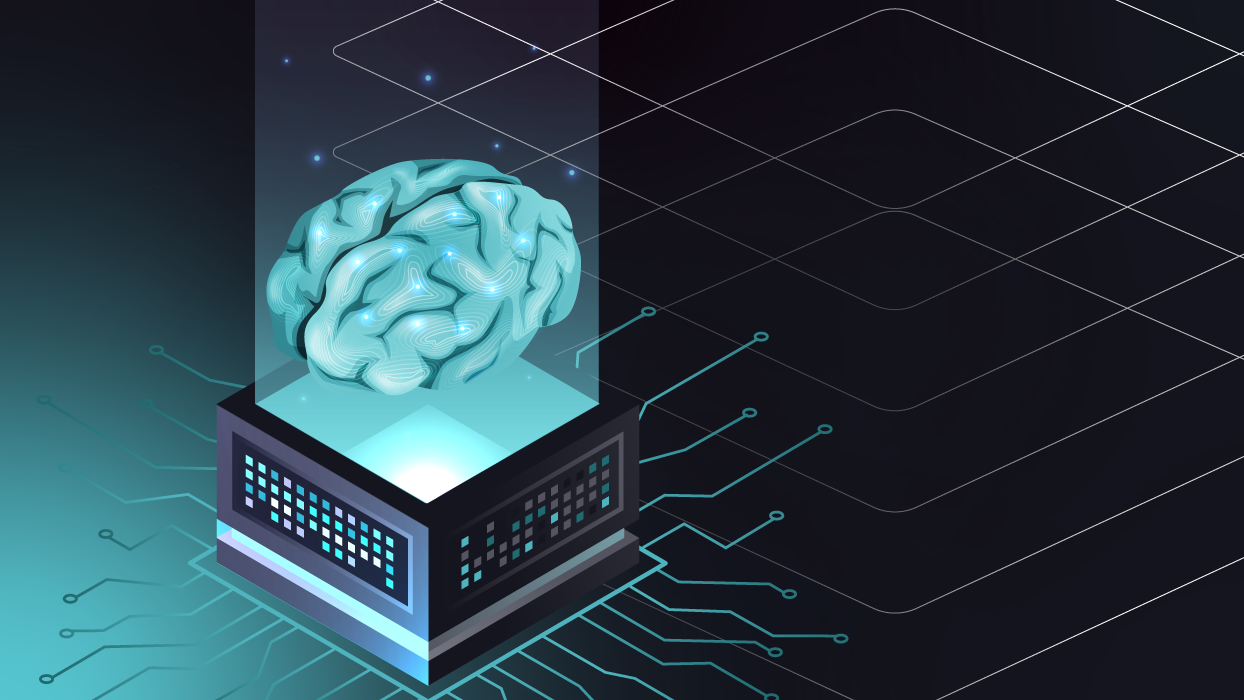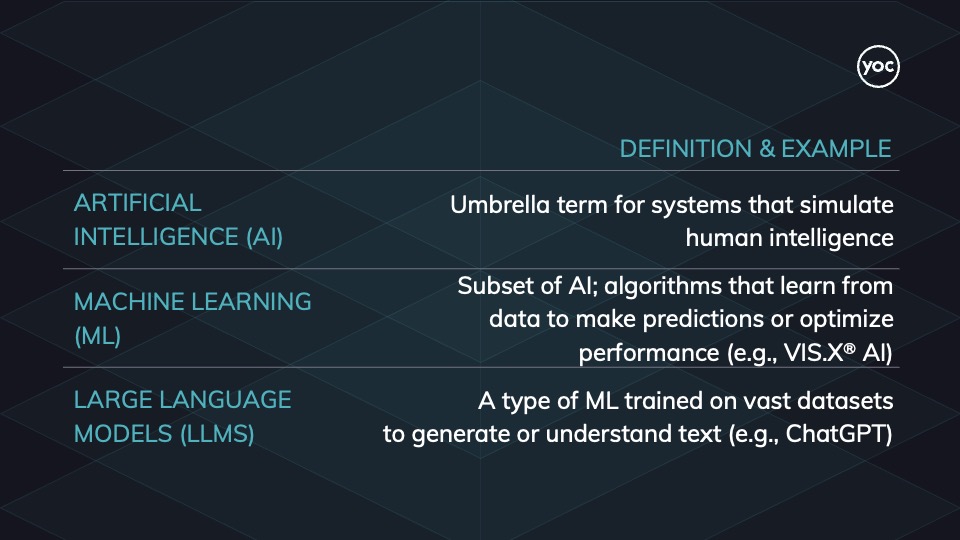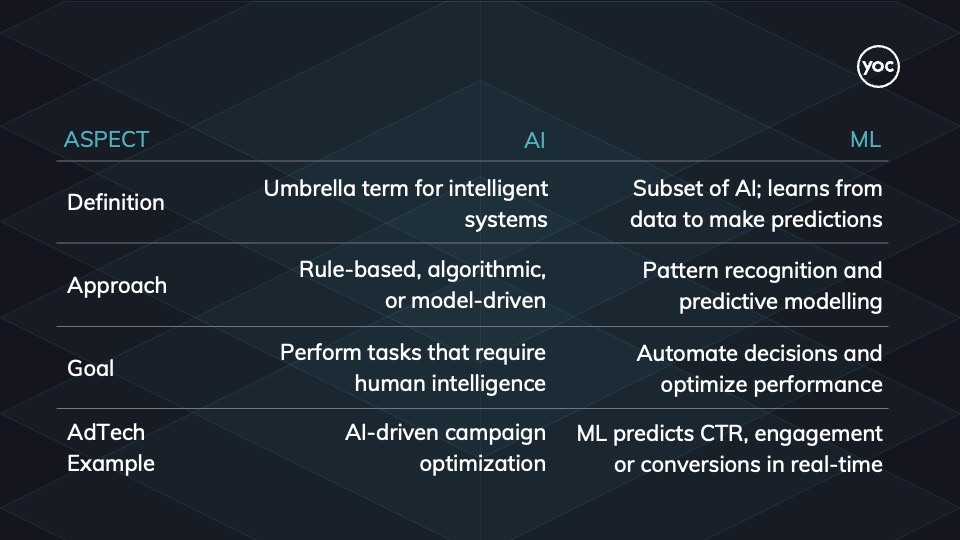Articles
The concept of AI: Difference between machine learning and AI
Understanding the differences between AI and Machine Learning is now essential for making smarter, data-driven decisions in digital advertising.
October 2025

Understanding AI and Machine Learning in Digital Advertising: A Practical Guide for Marketers
In this article, we’ll cover:
- What AI is and how it applies to digital advertising
- The role of Machine Learning within AI
- Key concepts like Large Language Models (LLMs)
- A real-world example of ML in action in AdTech
- Why understanding these technologies matters for marketing performance
What is Artificial Intelligence (AI)?
Artificial Intelligence refers to systems capable of performing tasks that typically require human intelligence. These tasks include recognizing patterns, making predictions and automating decisions. AI is a broad concept that encompasses many technologies, from chatbots to recommendation engines.
Everyday examples of AI include:
- Virtual assistants (such as Siri, Alexa)
- Recommendation systems (Netflix, Amazon)
- Language translation tools (Google Translate)
In digital advertising, AI helps marketers:
- Optimize campaigns dynamically
- Personalize ads for individual users
- Predict audience behavior to maximize ROI
Machine Learning: The Engine Behind AI
Machine Learning is a subset of AI. Instead of relying solely on pre-defined rules, ML algorithms learn from historical and real-time data to identify patterns and make predictions. This allows campaigns to improve automatically over time.
How ML works in practice:
Predictive models analyze past campaign and user behavior to identify patterns that indicate how audiences are likely to respond in the future. This enables automated optimization of bids, targeting, and creative placement.
Applications of ML in digital advertising include:
Predictive Targeting: Forecasting which users are most likely to engage or convert
Real-Time Bidding (RTB): Determining optimal bids for impressions in milliseconds
Audience Segmentation: Automatically identifying high-value user segments
Creative Optimization: Adjusting ad elements for maximum engagement
Machine Learning has significantly improved the efficiency and personalization of programmatic campaigns, allowing marketers to reach the right audience at the right time without manual intervention.
Key AI Concepts Every Marketer Should Know

In essence: AI is the goal, ML is the method, and LLMs are a specialized tool.
Real-World Example: VIS.X® AI in AdTech
To make these concepts tangible, consider VIS.X® AI, YOC’s ML-driven solution for creating high-impact ad formatsdigital advertising:
VIS.X® AI applies machine learning to automatically optimize campaigns.
Key benefits include:
- Viewability: Ensures ads are displayed where users are most likely to see them
- Click and Engagement Rates: Improves interaction with campaigns
- Video Completions: Optimizes video placement and display effects
The solution operates in a cookie-less environment, using algorithmic optimization to reach KPI goals without relying on external user tracking data. By leveraging historical and real-time campaign data, VIS.X® AI demonstrates how ML can enhance campaign performance while respecting privacy constraints.

Understanding this difference helps marketers choose the right tools and strategies and set realistic expectations for campaign performance.
Why Marketing Leaders Should Care
According to WARC, over 70% of digital advertisers use some form of AI or ML to optimize campaigns—a clear indicator of how central these technologies have become in AdTech.
- Smarter Budget Allocation: Data-driven insights inform where to invest marketing spend.
- Improved Campaign Performance: ML automatically optimizes bids, creatives and placements.
- Actionable Insights: AI delivers measurable KPIs and highlights opportunities for improvement.
- Future-Proofing Strategies: As programmatic advertising evolves, AI and ML will play a central role in success.
Conclusion
AI and Machine Learning are revolutionizing digital advertising. From predictive targeting to automated optimization, these technologies help marketers reach audiences more effectively while improving campaign performance. Tools like VIS.X® AI illustrate how ML can be applied in practice to achieve measurable results in a privacy-compliant way.
By understanding the core concepts and practical applications, marketers can make informed decisions and stay ahead in the rapidly evolving AdTech landscape.


